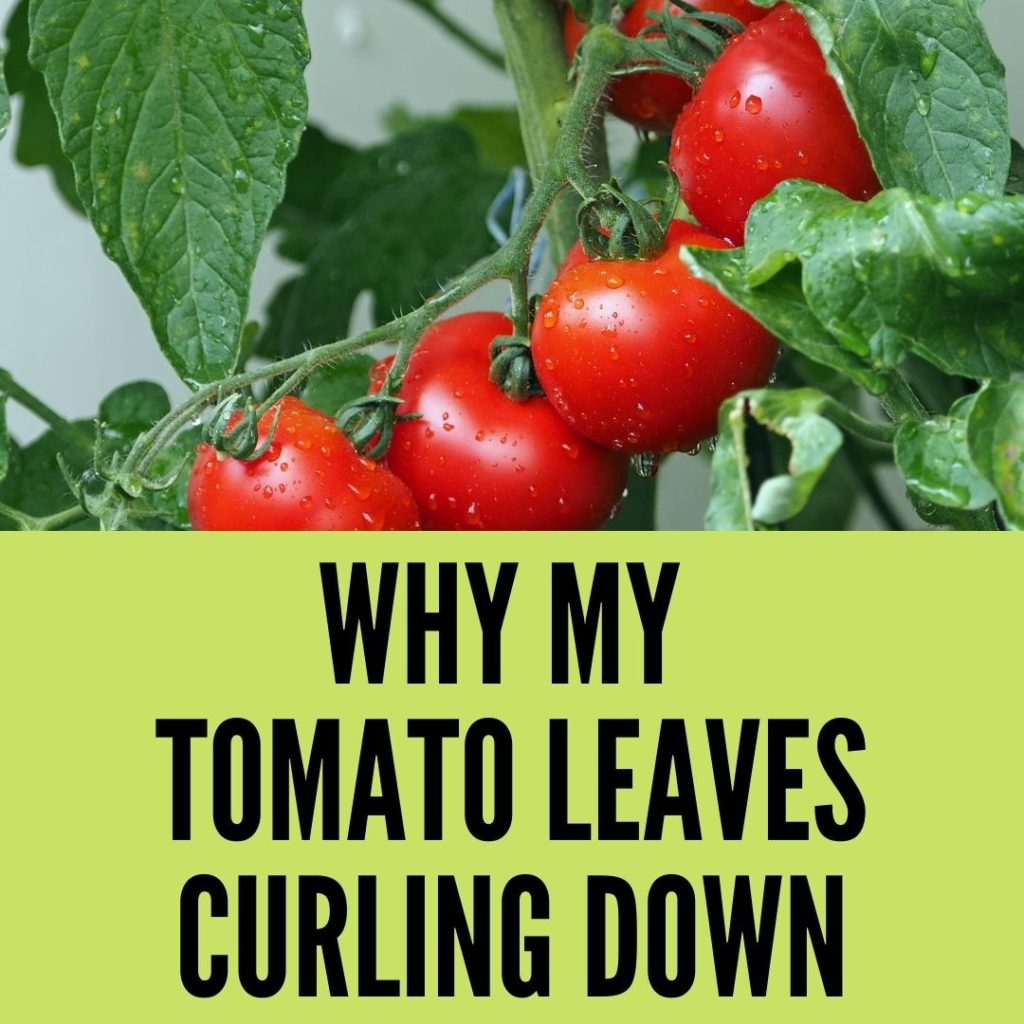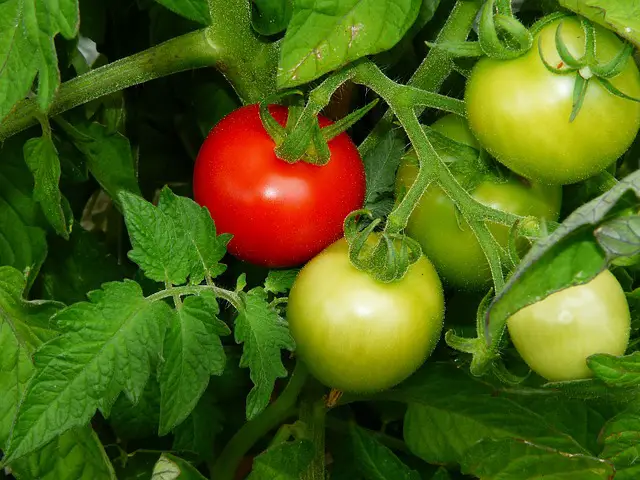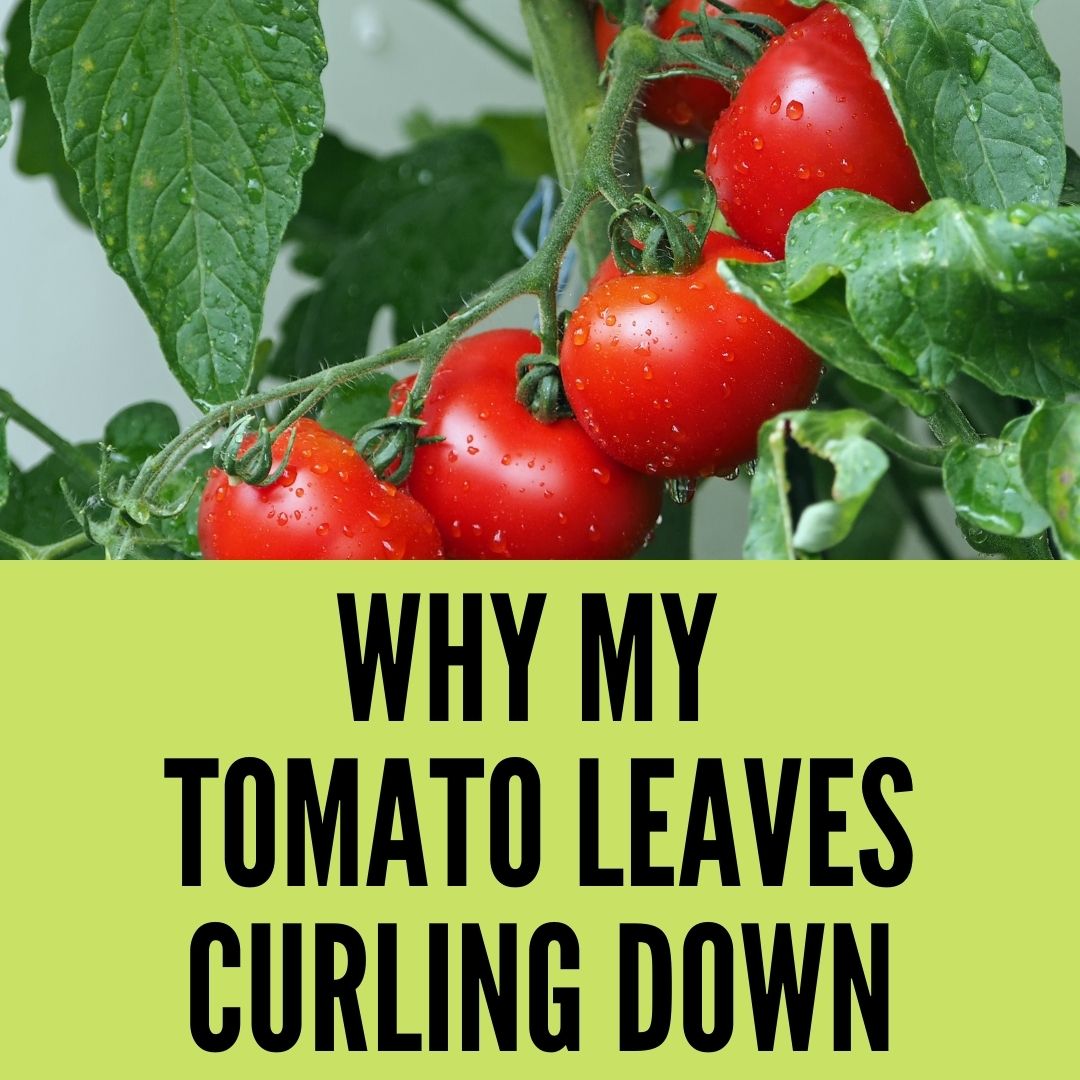The tomato leaves are suddenly curling up on your plants and don’t know what to do about it? When the leaves on tomato plants start to curl, there can be several reasons why. For this reason, it is important to look at the individual causes. This is the only way to take appropriate countermeasures. This guide will help you with that.
In this article, we will take a closer look at why your tomato leaves are curling down, what to do if the leaves on tomatoes are curled, and some other important aspects as well.
Tomatoes are among the most sensitive plants in the home vegetable garden. Nightshade plants need careful nurturing for them to produce harvestable fruit. Even the smallest care mistakes or unfavorable weather hurt the vitality of the tomato plants. One of the most common problems is curling leaves.
Tomato leaves curl due to a variety of causes that you need to compare and address individually. If the plant is doing better again, this can be seen from the leaves, which can recover within a short time. An overview of the possible causes and suitable solutions will save your tomato plants from further damage.
Growing tomatoes is not difficult if you do it responsibly. But sometimes even experienced gardeners make mistakes, and the harvest is not as rich as expected. For tomatoes in the beds to please the eye, you need to pay attention not only to the growing process but also to fight external factors that can negatively affect the harvest. If the plant begins to wither, the cause must be identified as soon as possible.

Reasons why your tomato leaves are curling down
There can be several reasons why leaves curl in tomatoes. They depend on both improper care and the influence of external factors. Among them are the following factors:
- Lack of moisture;
- Excess irrigation;
- Damage to the plant by pests;
- High air temperature;
- Failure to fix;
- Disturbance of the plant nutrition process due to imbalance of fertilizers.
Let’s look at each one individually.
Lack of moisture
Experienced gardeners begin to water the tomatoes only when the tips of the leaves fall off slightly. So the plant itself suggests its lack of water in the stem and leaves. If you skip this moment and do not water the tomato bush, the plant will begin to curl the leaves. This is done to reduce the surface area of the film from which evaporation occurs.
If this situation develops during the flowering of a tomato, flowers can fall from lack of water. How to fix the situation: water the bush in several approaches at the rate of 3-5 liters per plant for one watering. After that, you need to ensure regular soil moisture.
Too much water
Leaves can also curl up from an excess amount of water. While growing tomatoes in a greenhouse, you can combat twisting by stopping watering and regularly aerating to quickly lower moisture levels. If an excess of water is observed in the open ground and is associated with rain, the situation can be corrected by installing a film canopy over the bed. It protects the soil under the tomatoes from excess water. Good results are obtained by loosening the soil, which makes it dry faster.
High air temperature
In hot weather, especially in direct sunlight, the tomato leaves also curl. This is how they protect themselves. When the heat subsides, they turn up again.
How to help
- If it’s in the greenhouse – airing;
- If it’s in an open garden – shading.
- You can cover the tomato bush with agro fiber or spun-bond (special material).
Nutritional Disorder from Fertilizers
Most often, gardeners overfeed tomatoes with nitrogen fertilizers. If the soil on which the tomatoes are growing is supplied with too much manure, the upper leaves can curl into a ring. The solution to the problem will be the elimination of nitrogen in the dressing.
But a disruption in plant nutrition can also be observed if the bushes are not fertilized. The reason for the curling of the leaves may be a lack of trace elements. The tips of the leaves can dry out.
Wood ash is used to replenish the supply of trace elements. To do this, mix 1 liter of ash and 10 liters of water. For better nutrient return, it is recommended to boil the ash solution. The average consumption of broth is 1 liter per bush.
Drought stress
One of the most common reasons for curling or curling of the leaves on your tomato plants (Solanum Lycopersicum) is an insufficient water supply. Moisture is important to the nightshade family and if they don’t get enough water, the leaves will curl up. Furthermore, they dry out more and more, which can lead to the loss of foliage.
This harms the growth of tomato plants since the metabolism is restricted by the missing leaves. This problem is most common in summer during dry periods. Water the plants extensively to prevent them from drying out further. To do this, proceed as follows:
How to help
- Check the floor with a thumb test.
- Put your thumb in the ground.
- As soon as the top layer of soil is dry, water immediately.
- Water generously until the top layer of soil is moist.
- Check soil twice on hot days.
- Only water in the morning or evening.
- Don’t water midday as too much water evaporates.
Do not use cold water on the plants. Leave it at room temperature. Outdoor tomatoes need less water even in dry seasons because they get rain. You can provide the tomatoes with a mulch layer of clippings to retain moisture in the soil. This is especially recommended in dry regions.
Incorrectly fertilized
Too much or too little nutrients are also triggers for curling tomato leaves. Excessive fertilization often leads to an excess of nutrients, which can be recognized by the following symptoms:
Symptoms
- Tomato leaves start to curl
- Turns into dark green
- Spots on leaf edges appear, dry out (manganese excess)
- Very poor growth, many soft leaves are formed (excess nitrogen)

Common missing nutrients
If there is a nutrient surplus, you should significantly reduce the amount of manganese or nitrogen in the fertilizer. Then water thoroughly to flush out excess nutrients. The most common nutrients missing are:
1. Calcium:
If there is too little calcium, the curled leaves are smaller than usual. In addition, their shape changes visibly. An acidic soil pH is also a sign of calcium deficiency. use either a special calcium fertilizer, algae lime, or rock dust into the soil. Water thoroughly.
2. Copper:
If the leaves curl up from the tips and are mottled dark, you must assume a copper deficiency. If there is a severe copper deficiency, they will subsequently turn yellow and die. Fertilize the plant with copper sulfate.
3. Zinc:
If there is not enough zinc, the leaves curl up on the stem from above. Furthermore, the pH is too alkaline and should be lowered. For this, you use compost that is mixed with acidic components such as the needles of conifers, horn shavings, or oak leaves.
Weather
If the tomato plants are in the wrong position, problems can arise due to the weather, primarily strong winds. A sheltered location is important because Solanum Lycopersicum is extremely sensitive to wind. The tomato leaves curl even in light winds to protect the entire plant from potential damage.
If you have planted your tomatoes in a windy spot or they are always in the greenhouse on drafts, you should do something about it. You should place potted plants in a different location that is sheltered from the wind: such as house walls and hedges.
Garden sheds
If the tomatoes were planted in the bed, you must provide a windbreak. In most cases, it is sufficient if you equip one or two sides of the plants with a privacy screen made of wood or plastic, or glass surfaces. In the greenhouse, you should mend drafty areas.
Pests
Equally dangerous for Cucumis sativus are pests that can occur outdoors and in greenhouses. Two pests occur, of which the aphids (Aphidoidea) are much more dangerous because they transmit diseases. Aphids can be recognized by the yellowed and stunted foliage, as well as by the honeydew and, rarely, by ants. You need to be quick about an aphid infestation as they often make short work on your tomato
1. Tomato rust mite:
If your tomatoes have contracted tomato rust mites (Aculops lycopersici) at the end of summer, you need to act fast. Not only do tomato leaves curl up due to the infestation of the animals, you usually have to dispose of the tomatoes due to the extensive infestation. An infestation can be recognized by the following symptoms:
- Petioles discolored brown to rusty brown
- Coloring goes over the entire sheet
- Roll up from the edge and then they dry up
If you have to deal with tomato rust mites more often, bring out assassin bugs in the summer. They prevent a possible infestation.
2. Spider mites:
Spider mites (Tetranychidae) can be identified at the sucking points on the curling leaves, as well as on the webs and the animals themselves. They often strike in early summer when it is very dry. Plants in greenhouses with low humidity are often affected. Treat the plant as follows:
- Dissolve 1 part potash soap in 6 parts water
- Wash the plant thoroughly
- Remove dead leaves
- Alternatively: use predators (gall midges and predatory mites)
Diseases
1. Tomato Mosaic Virus:
After an aphid infestation, the tomato mosaic virus can be recognizable by these symptoms:
- leaf veins discoloured brown
- Leaves from bright mosaic spots
- Curls up and die
- significantly weakened tomato plant
Unfortunately, you have to dispose of infested plants so that the virus cannot spread further. Only resistant varieties and species such as ‘Tropical’, ‘Limetto’ or ‘Belriccio’ survive the infection.
2. Early blight:
Alternaria solani is responsible for early blight, which can be identified by the following signs:
- Spots up to 2 cm in size can be seen
- Colored gray to dark brown
- Leaves curl roughly
- The entire plant may die
The disease occurs particularly frequently on damp summer days or due to waterlogging. This fungal disease can be stopped by removing the affected leaves and spraying skimmed milk. Also, remove the lowest leaves and keep a strict crop rotation, because the viruses remain in the soil.
Yes, even the seasons can be to blame for curling the leaves on your tomato plants. Luckily, you don’t have to worry about this, as these are natural reactions of the plant to each season. These reactions are mainly triggered by the following points:
- Temperature
- Sunshine hours
- Humidity
- Weather
Tomato leaves curl specifically on two times of the year
1. Spring:
This only applies to young plants that have already developed many leaves. Since the root system is still developing in spring, the leaves cannot be effectively nourished without enough roots. The tomato plant curls its leaves to protect them from damage and to optimize growth. This condition can last up to four weeks.
2. Summer:
If it is significantly warmer during the day than at night, the leaves regularly curl up due to the significant temperature differences. If you cultivate your tomato plants in a greenhouse, you should compensate for the temperature differences, for example with shading nets.
In the open ground, such measures only protect against drying out when the sun shines strongly. Over time, if you take good care of the outdoor tomatoes, this problem will resolve itself.
How to treat leaf curling in tomatoes if the cause is a pest infestation?
To treat tomato bushes from pests, do the following:
Garlic solution
Take 1 liter of water and 150-200 g of chopped garlic. withstand 5 days. This is how a garlic concentrate is created. For processing tomato bushes, dilute 1-2 tablespoons of the concentrate per 1 liter of water. Then the leaves of the plants are sprayed abundantly;
Wormwood tincture
The concentrate is prepared by infusing 500-650 g of wormwood in 5 liters of boiling water for 2-3 days. To water, the bushes, mix 9 liters of water and 1 liter of concentrate.
Tobacco tincture
Chopped tobacco (about 200 g) is poured with boiling water (5 l) and infused for 1-2 days. The solution is sprayed on the bushes (you can add 100 g of laundry soap).
What to do for prevention?
The best defense against pests is prevention. Before planting tomatoes, it is recommended to thoroughly dig up the soil and pour boiling water or a solution of copper sulfate (dosage – according to the instructions on the package). Try to grow varieties and hybrids of tomatoes that are resistant to pest attacks.
Overall Tips and Infos for speed readers
- Drought causes the leaves to curl up
- water the plants thoroughly
- Regulate humidity in greenhouses
- Protect tomato plants from winds
- Avoid too much manganese or nitrogen leads to over-fertilization with curled leaves
- Excess manganese dries out leaves
- Excess nitrogen leads to excessive growth
- Apply fertilizer and water well
Conclusion
There are many reasons to curl leaves on tomatoes. There is both an overabundance of irrigation and a lack of it. The condition of the leaves is affected by the lack of trace elements and the excessive amount of fertilizers. Insect pests also contribute to it… It is important to correctly identify the cause and correct the situation. Then tomatoes will surely delight you with a good harvest.
